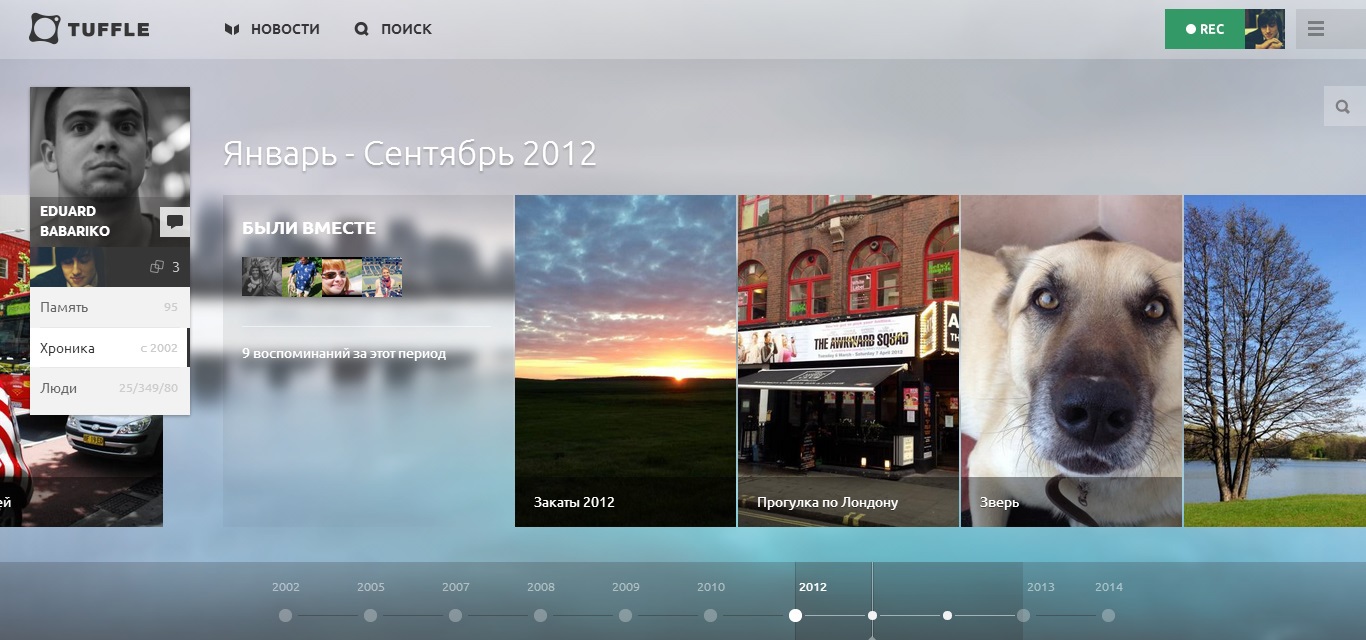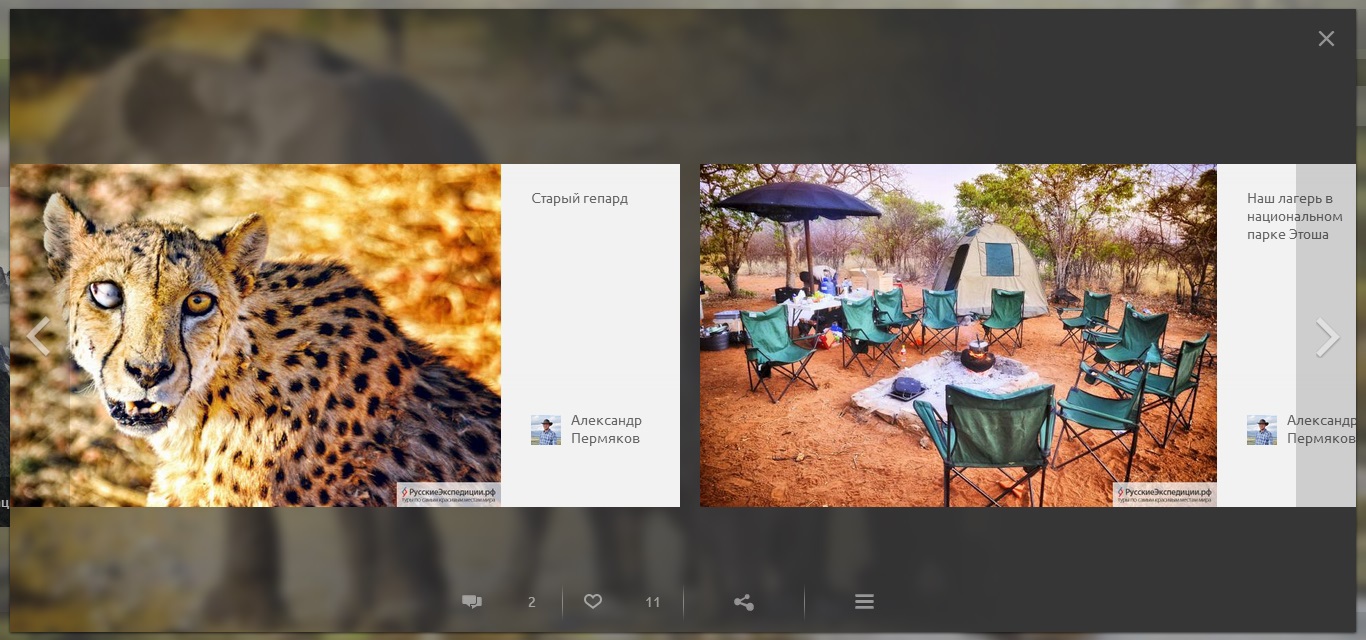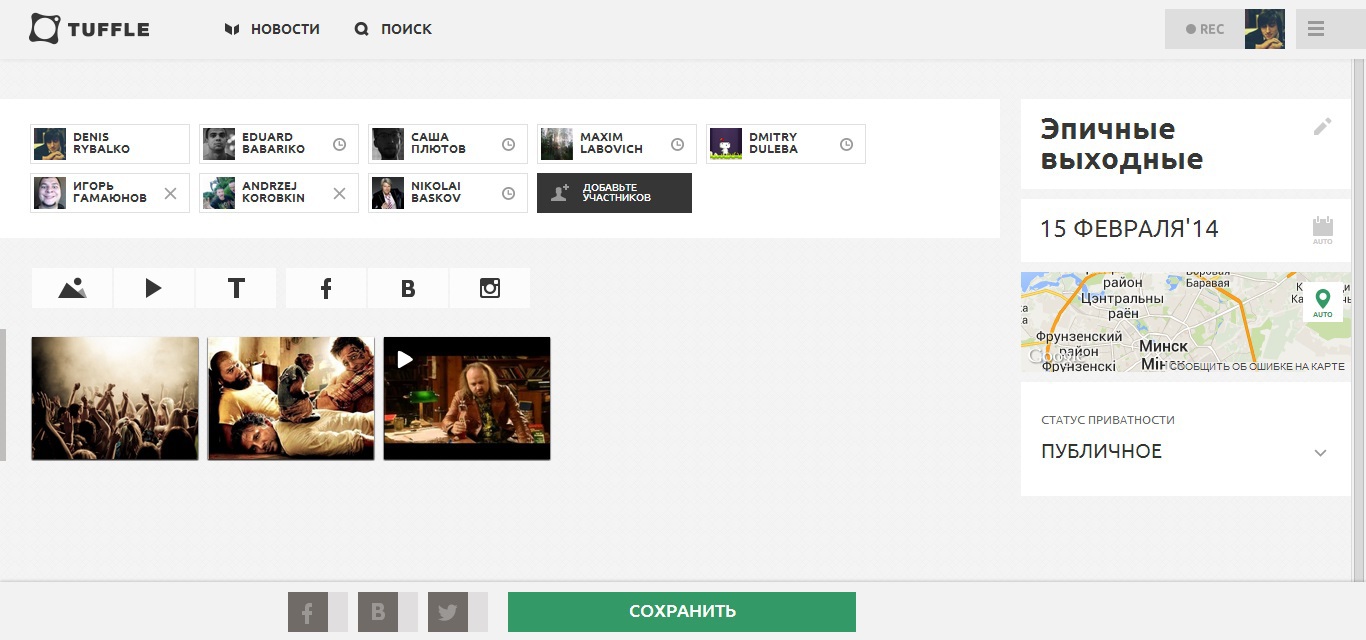How to challenge Instagram and not screw it up: briefly about the service Tuffle
Hello, dear Habrazhiteli!
With this post, our team wants to open the official blog of the social platform Tuffle and usher in a long series of useful and interesting publications.
We invite everyone to leave useful comments and accurate comments, ask any questions and, of course, join the Tuffle user community . We will be glad to everyone, believe me.

')
What is a tuffle? We "lent" the name of the rock, known as tuff. This material is known for being the basis of many architectural monuments of antiquity - the Colosseum, for example. This philosophy formed the basis of our project. We want to give people the opportunity to perpetuate forever all the most important and bright events of their lives.
For the first time the idea of creating a service of memories, as a new form of content, was born in the summer of 2012. At the same time, work began on the project under the working title “Memory Hub”. Another photo hosting? Oh, no. The idea of Tuffle was born out of the idea that most photo hosting services are absolutely useless to the end user. Driven by a phantom socialization philosophy, millions of people post billions of photos onto the web that collect several likes and ... are forgotten. Surprisingly, services designed to preserve memories only contribute to their oblivion, encouraging users to post, like and comment more and more quickly, thus increasing the rate of monetization of the service itself.
At some point, the founder and CEO of Tuffle, Edward Babariko, felt like a trained squirrel locked in an old photo projector drum - and decided to stop. In order to develop an ideologically coherent alternative, we had to point out all the weak points of the photohosting services on points and offer an adequate solution to the problem.
Photo hosting services have taught us that we constantly need everything. Must photograph your breakfast. Must take a selfie. We must constantly add new content so that subscribers love us and do not forget. We spent a lot of effort to explain to our users in the interface language: you don’t owe anything to anyone, you do it for yourself and people close to you.
We came up with the opportunity to view a beautifully designed chronicle of your whole life. We tried to make the process of viewing the chronological tape of memories as attractive as possible so that the person would like to linger over it, examine it and go back to the past. At the same time, our users can navigate as quickly as possible in memory and navigate to the desired object.

Logically follows from the problem number 1. Carrying an idea in this graphic chaos is becoming increasingly difficult. We select filters for each photo (necessarily different, because repetition is a sign of lack of taste!) In pursuit of style and self-expression, forgetting about the main value of the photo - the ability to capture a bright moment to return to it at any moment.
Tuffle is a project about memories, not photos. Our users can collect memories not only from photos, but also from videos and test notes, attach them to places, dates and people. By the way, in the future we want to add the ability to attach memories even to a specific event - a concert, the World Cup, events on the Maidan - will be very cool from a functional point of view. All these forms of content are organically combined on Tuffle in a holistic, complex image, even in a kind of history. Our users do not just upload nice photos - they share their stories in photos, videos and notes.

They are trying hard to convince us that services like Instagram are social, which is fundamentally wrong and smacks of outright lies. One may argue that such services include the user in the dynamic network life of the post-information society, only the social process by default implies communication and interaction between the participants. Like - is, of course, an element of social interaction, the expression of their opinions or attitudes. However, the element is so weak and insignificant that even an online game is at times more pronounced social in nature.
In Tuffle, we tried to maximize the social potential of the platform - through shared memories. Suppose you and your friends went to a party, night races or a trip - it does not matter. Sooner or later the time will come to share your digital memories. In Tuffle, it’s enough to invite friends to the memory - and now every participant will be able to view it directly from the page of their profile. And most importantly - will become a full-fledged editor. Everyone will be able to share their vision of the event, and piece by piece you will put together a solid and vivid memory. Of course, we also retained the usual mechanisms of social interaction - likes and comments, but in Tuffle they play far from the most important role.

That's all for today. In further publications, we will try to more substantively tell what difficulties — technical, marketing, and life — we encountered while trying to change the culture of perception of digital memories and private graphic content. Thank you for your attention and stay in touch!
With this post, our team wants to open the official blog of the social platform Tuffle and usher in a long series of useful and interesting publications.
We invite everyone to leave useful comments and accurate comments, ask any questions and, of course, join the Tuffle user community . We will be glad to everyone, believe me.

')
IDEA
What is a tuffle? We "lent" the name of the rock, known as tuff. This material is known for being the basis of many architectural monuments of antiquity - the Colosseum, for example. This philosophy formed the basis of our project. We want to give people the opportunity to perpetuate forever all the most important and bright events of their lives.
For the first time the idea of creating a service of memories, as a new form of content, was born in the summer of 2012. At the same time, work began on the project under the working title “Memory Hub”. Another photo hosting? Oh, no. The idea of Tuffle was born out of the idea that most photo hosting services are absolutely useless to the end user. Driven by a phantom socialization philosophy, millions of people post billions of photos onto the web that collect several likes and ... are forgotten. Surprisingly, services designed to preserve memories only contribute to their oblivion, encouraging users to post, like and comment more and more quickly, thus increasing the rate of monetization of the service itself.
At some point, the founder and CEO of Tuffle, Edward Babariko, felt like a trained squirrel locked in an old photo projector drum - and decided to stop. In order to develop an ideologically coherent alternative, we had to point out all the weak points of the photohosting services on points and offer an adequate solution to the problem.
Problem # 1: Outward Orientation
Photo hosting services have taught us that we constantly need everything. Must photograph your breakfast. Must take a selfie. We must constantly add new content so that subscribers love us and do not forget. We spent a lot of effort to explain to our users in the interface language: you don’t owe anything to anyone, you do it for yourself and people close to you.
We came up with the opportunity to view a beautifully designed chronicle of your whole life. We tried to make the process of viewing the chronological tape of memories as attractive as possible so that the person would like to linger over it, examine it and go back to the past. At the same time, our users can navigate as quickly as possible in memory and navigate to the desired object.

Problem number 2: The form replaces the content
Logically follows from the problem number 1. Carrying an idea in this graphic chaos is becoming increasingly difficult. We select filters for each photo (necessarily different, because repetition is a sign of lack of taste!) In pursuit of style and self-expression, forgetting about the main value of the photo - the ability to capture a bright moment to return to it at any moment.
Tuffle is a project about memories, not photos. Our users can collect memories not only from photos, but also from videos and test notes, attach them to places, dates and people. By the way, in the future we want to add the ability to attach memories even to a specific event - a concert, the World Cup, events on the Maidan - will be very cool from a functional point of view. All these forms of content are organically combined on Tuffle in a holistic, complex image, even in a kind of history. Our users do not just upload nice photos - they share their stories in photos, videos and notes.

Problem number 3: Fake socialization
They are trying hard to convince us that services like Instagram are social, which is fundamentally wrong and smacks of outright lies. One may argue that such services include the user in the dynamic network life of the post-information society, only the social process by default implies communication and interaction between the participants. Like - is, of course, an element of social interaction, the expression of their opinions or attitudes. However, the element is so weak and insignificant that even an online game is at times more pronounced social in nature.
In Tuffle, we tried to maximize the social potential of the platform - through shared memories. Suppose you and your friends went to a party, night races or a trip - it does not matter. Sooner or later the time will come to share your digital memories. In Tuffle, it’s enough to invite friends to the memory - and now every participant will be able to view it directly from the page of their profile. And most importantly - will become a full-fledged editor. Everyone will be able to share their vision of the event, and piece by piece you will put together a solid and vivid memory. Of course, we also retained the usual mechanisms of social interaction - likes and comments, but in Tuffle they play far from the most important role.

That's all for today. In further publications, we will try to more substantively tell what difficulties — technical, marketing, and life — we encountered while trying to change the culture of perception of digital memories and private graphic content. Thank you for your attention and stay in touch!
Source: https://habr.com/ru/post/212777/
All Articles